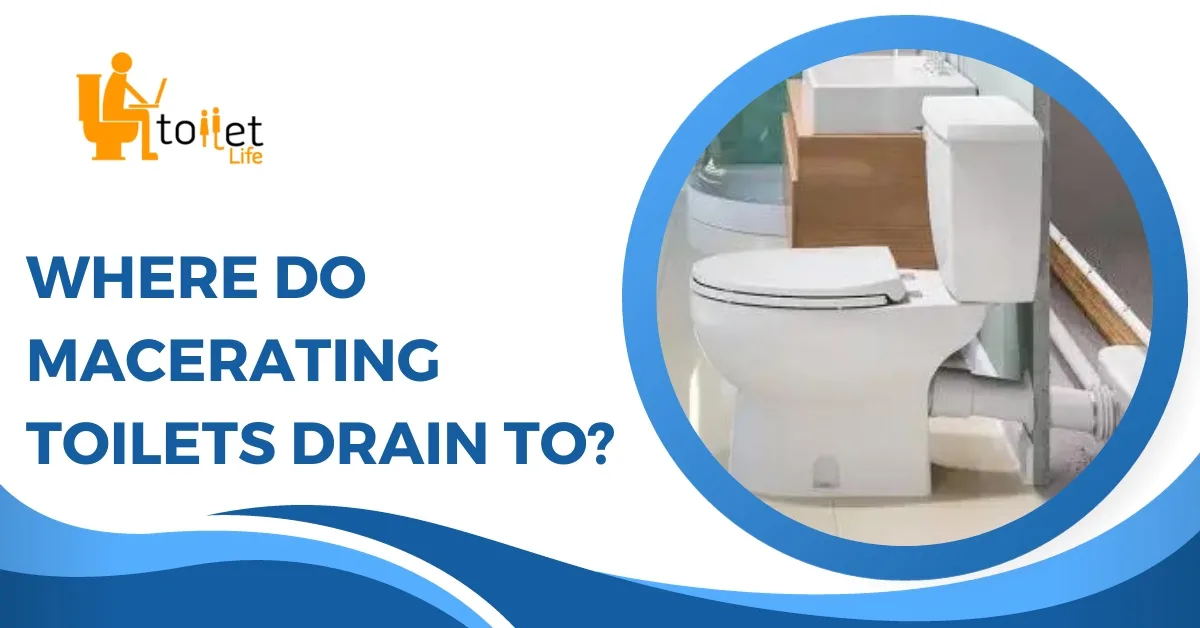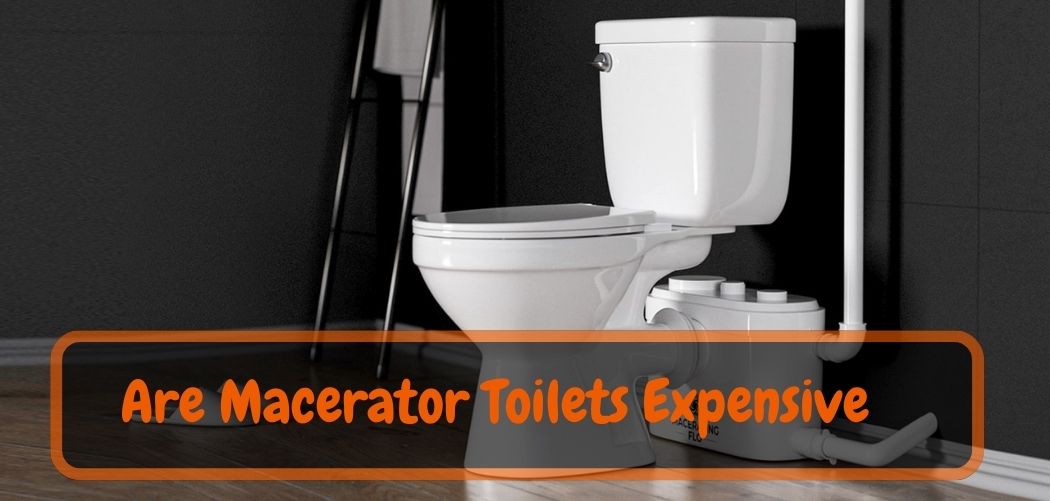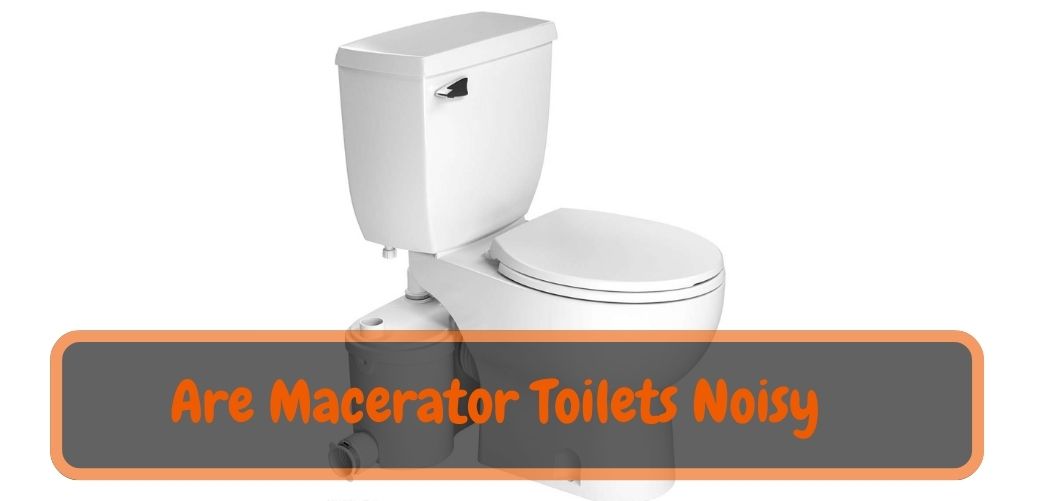Macerating toilets drain to a holding tank or directly into the sewage line. These toilets use a pump to break down waste and toilet paper before pumping it away.
Macerating toilets are a great option for installing a new bathroom or renovating an existing one, where traditional plumbing is not feasible. They are also ideal in basements, or locations where waste needs to travel uphill or across long distances to reach the mainline.
Macerating toilets work by turning solid waste into a slurry that can be pumped through a small-diameter pipe. This process helps to reduce clogs and prevent sewage backups. In this article, we will explore how macerating toilets work and discuss the benefits of installing one in your home or business.
We will also look at the different types of macerating toilets available and provide a comprehensive buying guide to help you choose the best one for your needs.
Whether you are a homeowner looking to add a bathroom or a contractor working on a new construction project, this article will provide you with all the information you need to know about macerating toilets.
How Macerating Toilets Work?
Macerating toilets are a type of toilet that uses a motorized system to grind up waste and pump it away. They are commonly used in homes where traditional plumbing is not an option, such as in basements or remote locations.
The process of maceration involves chopping up solid waste with blades and impellers, then pumping it through a small pipe to the main plumbing system. These toilets are different from traditional ones in that they have a smaller footprint and require less water to flush.
Macerating toilets are also easier to install and maintain. They are a great option for those in need of a toilet system that can handle waste in a unique plumbing situation.
Where Do Macerating Toilets Drain?
Macerating toilets are a popular choice for homeowners who need to install a toilet in a difficult location, away from their main plumbing. These types of toilets work by breaking down waste into smaller pieces for easy transportation to the drainage system your home employs.
There are three main options available for macerating toilet drainage- sewage ejector systems, septic tanks, and public sewer systems. The choice of which system to use depends on factors such as your location, budget, and the features of your home’s existing plumbing system.
Before installing a macerating toilet, it is necessary to examine the drainage options available and choose the appropriate system that is compatible with your home’s plumbing system.
Where does a macerator go?
A macerator is typically installed in proximity to the fixture or appliance it serves, such as a toilet, sink, or shower. It’s commonly placed behind the fixture or inside a wall or under a sink. The purpose of a macerator is to grind up solid waste (like human waste, food scraps, or similar materials) into smaller particles so that it can be easily pumped or carried through the plumbing system.
For example:
- Toilet Macerator: In the case of a toilet macerator, it’s usually installed behind or inside the wall near the toilet. The macerator will grind waste from the toilet and pump it into the plumbing system.
- Sink or Shower Macerator: If it’s for a sink or shower, it could be installed under the sink or in a nearby cabinet. The macerator would grind up the waste from the sink or shower and pump it into the plumbing system.
The macerator is connected to the plumbing system and typically discharges the ground-up waste into the existing wastewater pipes or a dedicated sewage line. It's important to follow local building codes and regulations when installing a macerator to ensure it is properly positioned and connected within the plumbing system.
Where Does the Waste Go from a Saniflo Toilet?
A Saniflo toilet, or any macerating toilet for that matter, operates by macerating waste (solid and liquid) into a fine slurry before pumping it away. Here’s how the waste is managed in a Saniflo system:
- Maceration: When you flush the Saniflo toilet, the waste is macerated by the built-in macerator pump. The macerator grinds the waste into a fine slurry.
- Pumping: The slurry is then pumped under pressure through a discharge pipe. This discharge pipe can be connected to the existing plumbing system or directed to a dedicated drainage line, depending on the installation.
- Connection to Drainage System: In a typical setup, the discharge pipe from the Saniflo toilet is connected to the existing sewer or septic system. The slurry is then transported through the pipe to the main sewage or septic line.
- Disposal: The waste from the Saniflo toilet ultimately reaches the municipal sewer system or the septic tank. In the case of a municipal sewer, the waste is transported to a sewage treatment plant for processing and treatment. If you have a septic tank, the waste is collected in the tank to undergo natural decomposition and separation processes.
It's important to ensure that the Saniflo system is installed correctly and complies with local building codes and regulations. Proper maintenance and following manufacturer guidelines for usage and maintenance are essential to ensure the system functions effectively and efficiently.
Where can you put a macerator toilet?
A macerator toilet, such as those made by Saniflo or similar brands, can be installed in various locations within a building where conventional plumbing may not be feasible or convenient. Here are some places where you can put a macerator toilet:
- Below Sewer Level: Macerator toilets are often used in locations where the toilet is situated below the level of the main sewer line. The macerator pump helps lift the waste to the appropriate level for connection to the sewer or septic system.
- Basements: Basements are a common location for macerator toilets because they are often situated below the sewer line. The macerator pump allows waste to be pumped up to the level of the main sewer line.
- Loft Conversions: If you’re converting a loft or attic space into a living area and need a bathroom, a macerator toilet can be a practical solution to handle the waste when the existing plumbing is not easily accessible.
- Garages: Macerator toilets can be installed in garages or detached structures where connecting to the main sewer line is difficult or expensive.
- Ensuite Bathrooms: In home extensions or additional bathrooms, where extending traditional plumbing would be challenging, a macerator toilet can be a viable option.
- Off-Grid Homes: In off-grid homes or cabins where there is no connection to a central sewer system, a macerator toilet can be used to pump waste into a septic tank or other appropriate disposal system.
- Commercial Spaces: Macerator toilets can also be used in commercial spaces like restaurants, cafes, or small offices where adding traditional plumbing might be cost-prohibitive.
It's essential to follow local building codes and regulations when installing a macerator toilet. Additionally, consider consulting a plumbing professional to ensure the proper installation, maintenance, and compliance with local plumbing requirements.
Frequently Asked Questions For Where Do Macerating Toilets Drain To?
What Is A Macerating Toilet?
A macerating toilet is a toilet that breaks down waste and toilet paper into a slurry.
How Does A Macerating Toilet Work?
A macerating toilet works by using a motor to grind up waste and toilet paper into tiny pieces before pumping it to a drain line.
What Are The Benefits Of Using A Macerating Toilet?
Macerating toilets can be installed in areas where traditional plumbing is not possible and have a compact design, which makes it easier to install.
Can A Macerating Toilet Drain To A Septic Tank?
Yes, a macerating toilet can drain to a septic tank. However, it is important to make sure the septic tank is properly sized for the additional waste.
How Do You Maintain A Macerating Toilet?
To maintain a macerating toilet, regularly add aerobic bacteria products to the system and avoid flushing non-biodegradable items such as diapers and wet wipes.
1. Where do macerating toilets drain to outside?
Macerating toilets typically drain waste into the existing plumbing system, which then connects to the main sewer or septic system. The waste is transported through a discharge pipe to the appropriate external drainage location.
2. Where do macerating toilets drain to diagram?
For a visual representation of where macerating toilets drain, you can refer to plumbing diagrams specific to macerator toilet installations. These diagrams illustrate the flow of waste from the macerating toilet into the drainage system.
3. Macerating Toilet Pros and Cons
Pros:
- Allows flexible placement of toilets in locations below the main sewer line.
- Enables installation in spaces with limited access to traditional plumbing.
- Cost-effective compared to extensive plumbing renovations.
Cons:
- Macerating units require regular maintenance.
- Some models may produce more noise during operation.
- Initial installation costs may be higher than conventional toilets.
4. Macerator Toilet Problems
Common macerator toilet problems can include clogs, mechanical failures, and issues with the macerator pump. These problems can often be resolved through proper maintenance, repair, or replacement of faulty components.
5. Macerator Toilet Building Regulations
The installation of macerating toilets must comply with local building codes and regulations. Specific regulations may dictate the proper installation, ventilation, electrical requirements, and permitted usage of macerator toilets within a building.
6. Best Macerating Toilet
The “best” macerating toilet can vary based on individual preferences, budget, and specific installation requirements. Popular and reputable brands for macerating toilets include Saniflo, Liberty Pumps, and Thetford. Consider factors like performance, noise level, ease of maintenance, and overall customer reviews when choosing the best macerating toilet for your needs.
Conclusion
After going through this comprehensive article, you must have learned a lot about macerating toilets and their drainage system. These toilets have revolutionized the way people in modern homes manage their waste. With the macerating technology, it is possible to install a toilet in areas which were initially impossible, and in doing so, you save money on installation costs and enhance convenience in your home.
The use of macerating toilets is also environmentally friendly because it reduces water consumption. The waste from macerating toilets is usually pumped into a septic tank or sewer system, similar to a traditional toilet. However, always consult a professional plumber during the installation process to ensure that your macerating toilet is installed correctly to avoid any plumbing mishaps.
So, go ahead and consider installing a macerating toilet in your home today!










